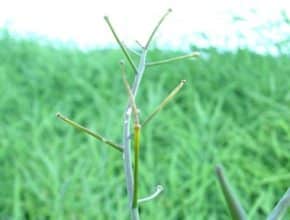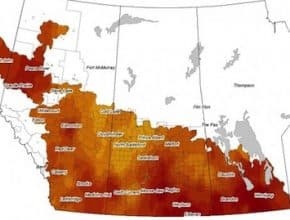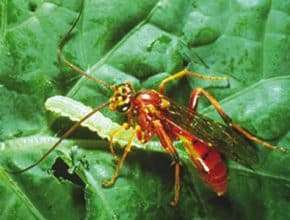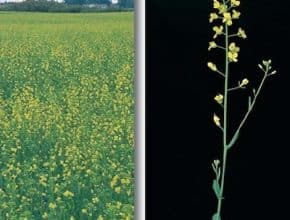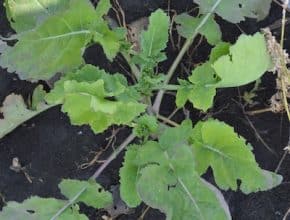Blasted heat. A long stretch of hot weather at flowering can greatly reduce canola yield potential. Even with a few days of heat, hormone balance and regular pod formation can take a week to return to normal. (See the photo above.) Hot sclerotinia. Hot and dry conditions can reduce the sclerotinia risk significantly. However hot and humid conditions may not…
July 9, 2014 - Issue 14
-
-
-
What caused the damage to these buds? We have this question, and three others specific to sclerotinia stem rot management…
-
The table above shows fungicides available to manage sclerotinia stem rot. The article answers a few common questions on sclerotinia stem rot management…
-
Beneficials. Lygus, bertha armyworm and diamondback moth have a number of natural enemies that will keep populations in check. These beneficial insects may not control an immediate pest threat that has already exceeded thresholds — growers will still have to spray in that case — but beneficials can keep a lid on populations. The key to preserving beneficial insects is…
-
1. Flowering percentage to determine timing for fungicide. The photo above from NDSU shows canola at 20% flower, which is when the application window opens. To assess flowering progress, concentrate on the main stem only. Count all flowers, including aborted flowers and developing pods. With 15 flowers main stem, the field is around 20% flower. Read the other nine…
-
Canola in fields with excess moisture will often show various signs of stress, including yellowing, purpling, stunted growth — or all of three. Excess moisture creates two problems for crop nutrition: (1) It can remove nutrient from the soil. And (2) it can “drown” roots and make it impossible for them to take up nutrients — even if nutrients are…
-
